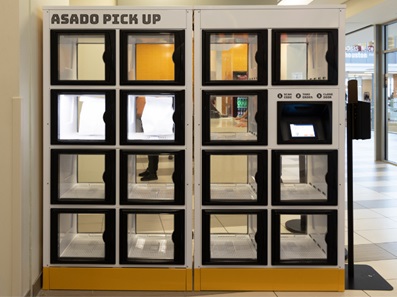Demand for better hygiene and safety is more intense than ever in virtually every facet of everyday life. In many cases, the solutions rely at least partly on contactless technologies.
For a well-known example, consider the public lavatory. Studies in Europe and the US reveal that users will resort to extreme measures to avoid direct contact with their surfaces: 60% stepped on the toilet lever to flush, and 50% wadded their hand in toilet paper to open the door.
One response to such behaviour has been the voice-operated ‘Hi Toilets’ installed around Tokyo’s Shibuya district. From operating doors and taps to playing soothing music, these high-tech loos literally take everything off the users’ hands. Already in place before the pandemic, COVID-19 has greatly accelerated public acceptance of the concept.
Source from Buzz Watch YouTube channel
However, contactless tech for lavatories differs from many other applications, in that human contact has always been unwelcome there. Minimising it actually improves the user experience. But is this true of other contactless applications at events? Apart from improved hygiene, what do brands have to gain from their adoption?
Hands-off at Expo Dubai
For some possible answers, we can look to the Expo at Dubai. Many of the technologies to be showcased there are undoubtedly destined to become mainstream features of events and everyday life in the near future.
Among the contactless solutions found among its pavilions is a robotic barista whose mechanical arms prepare and serve coffee with super-hygienic precision while offering contactless payment. The two-storey sustainable cloud kitchen of Talabat, the expo’s official food deliverer, offers yet more insight. Representing approximately 30 brands, the kitchen comes equipped with futuristic F&B tech such as a robotic ice-cream confectioner. Customers can dine in or use a mobile app to place orders and have their meals promptly delivered elsewhere on the expo site by one of the kitchen’s 10 autonomous vehicles. As well as improving hygiene, Talabat expects the cloud kitchen to boost food delivery efficiency whilst offering customers a wider menu of choices.
When it comes to paying for anything, anywhere on the expo site, Network International’s payment devices are set to offer a pleasingly effortless user experience. Fully integrated into the expo’s point-of-sale (POS) system, they accept all types of card transactions, including contactless and QR payments. Their versatility enables seamless commercial activity among all international participants in the event.
‘Planet or Plastic?’ hands-free exhibition experience
Though on a much smaller scale that Expo Dubai, the ‘Planet or Plastic’ exhibition at ArtScience Museum in Singapore was also heavily influenced by a heightened need for hygiene. An interactive educational space about disposable facemasks, it offered advice on improving day-to-day living with a high degree of safety. Accordingly, Pico ensured that visitors could interact with the educational journey without the use of hands: for example, visitors started the experience by hitting a ‘start’ button with their feet.
Faster food, more nourishing data with contactless catering
Self-service automated food lockers are the University of Houston’s contactless answer to the challenge of feeding students on campus while minimising the risk of virus transmission. Customers use a mobile app to place their orders, which are prepared in a kitchen behind a bank of two-sided flow-through lockers. After receiving a notification email, the customer uses a unique code to open the designated locker and retrieve their meal.
The University’s contactless system potentially increases throughput and transactions while reducing queues and crowds. Importantly, it also provides real-time data that can be used to further improve the experience.
Source from University of Houston website
Trying on virtual fashions with a virtual self
Retailing too is feeling the effects of the move toward contactless interaction. In Hong Kong, Harbour City collaborated with a digital avatar tech company to introduce ‘My Virtual Closet’ with ‘Quantum Fit’, a ‘real-time auto-fit virtual try-on system’. At least initially, the system enabled children to generate realistic avatars to try on their choice of virtual apparel.
Source from Harbour City Youtube channel
Cosmetics: A personal experience through technology
Beauty has always been a very hands-on business, with customers at make-up counters and salons relying heavily on human assistance for everything from sampling products to complexion analysis. Perfect Corp. aims to change that with new technologies that may deliver a contactless experience in retail stores as well as help brands to improve direct-to-consumer experiences online.
Key components of the system include virtual ‘try-on’ technology that uses gesture and voice control, face mask detection, and a virtual arm swatch for lipsticks. Skin diagnostics and beauty consultations are performed by AI. Meanwhile, online services include interactive livestream videos hosted on brand websites, which can include AR virtual ‘try-on’ features.
A similar approach is found at the L’Oreal Paris product launch collaboratively activated by Pico and L’Oreal Paris at the Lotte Duty Free’s Star Lounge in Seoul. At the launch, L’Oreal utilised the Modiface app – which used AR (augmented reality) technology to allow consumers to experience make-up collections virtually.
Both approaches to the contactless experience are notable because they attempts to address more than a need for a safe, hygienic consumer option; their highly personalised and interactive nature also creates a unique experience, much as one would have when interacting with a human assistant.
Conclusion
Public safety may be the most powerful driver for the adoption of contactless technologies today – but it won’t remain so. As shown in the preceding examples, contactless solutions can also be designed to fulfill users’ desire for easier transactions, faster service and wider choices, and can even incorporate a human-like touch of personalisation. By meeting these needs at events, in retail settings and online, brands can make contactless into an important new touchpoint with their audiences.
ACTIVATE YOUR BRAND NOW